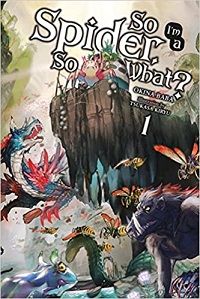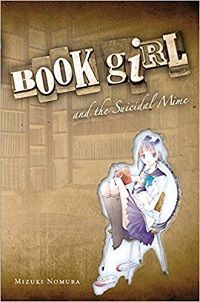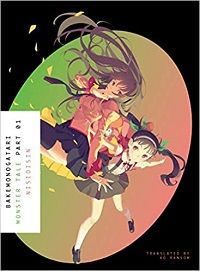What Is a Light Novel?
Light novels are short, fast-paced novels that are manga-adjacent. Many use tropes familiar to avid manga readers. The slapstick comedy, the over-the-top violence, the over-exaggerated reactions — you can find all these things in light novels. The only difference is that it’s prose versus a comic. As a result, many manga fans read light novels and most light novel fans read manga. The audiences overlap, and you’ll notice that North American manga publishers release light novels alongside their manga licenses regularly. The audience overlap isn’t accidental. You’ll find manga-style illustrations in many light novels. Don’t expect panels like you’d find in a manga, though. These drawings are meant to provide visual representations of the characters, and perhaps depict key moments in the book. Sometimes light novels are compared to YA novels and that’s not entirely wrong. The characters and plot lines of series would appeal to a teen reader. Likewise, streamlined prose will also suit readers who, for whatever reason, don’t want the more descriptive prose and complicated narratives often found in literary fare. But comparing light novels to YA novels isn’t entirely accurate either. It’s like saying all manga is for teens. We know that’s not true. A better way to think of light novels is to think of them as a type of pulp novel. The aim is to entertain and provide an escape from reality, not create a peerless work of literature.
Some Traits of Light Novels
In general, light novels read faster than your typical novel. The shorter lengths combined with fast-paced narratives mean that you can finish a volume in a couple hours. It’s ideal if you don’t have a lot of free time but still want to read a book. Or, if you find yourself struggling to focus for whatever reason (like, say, a pandemic), you might find light novels easier to read when your mind is filled with so many competing thoughts and concerns. In many ways, that situation is exactly what light novels are made for. Some light novels begin as online serials self-published on blogs or forums. Publishers often pick up these titles, help the author revise them, and then release them as light novels. An artifact of these online origins are the titles. You might notice some light novels feature long, descriptive titles that read like plot descriptions. How the Realist Hero Rebuilt the Kingdom. My Daughter Left the Nest and Returned an S-Rank Adventurer. Arifureta: From Commonplace to World’s Strongest. They sound like quick plot summaries, don’t they? There’s a good explanation for this. Webnovel platforms feature countless titles competing for readers’ attention. How do you hook readers who might never click on a title to read a plot summary? You write descriptive titles like this.
Light Novels in North America
North American manga publishers have released light novels ever since the first manga boom of the 2000s. But they struggled to find a place in the market until 2014, when Yen Press launched Yen On, an imprint devoted entirely to light novels. Years of watching light novels flounder in the North American marketplace led to some skepticism about this new venture. Yen On’s initial plan involved publishing 24 light novels a year and sounded so ambitious. Today, easily more than 24 light novels are published a month. Other manga publishers have followed Yen Press’s example and launched their own light novel imprints, as in the case of Seven Seas Entertainment and their Airship imprint. We even have publishers devoted solely to localizing light novels in English! Times have certainly changed.
Some Starter Light Novel Recommendations
Hopefully, this served as a helpful introduction and answers the question of “What is a light novel?” If you’re interested in picking one up, never fear. You can find them in print or digital, just like a regular novel. You can even read them on digital apps like Bookwalker. What’s even cooler is that publishers are working to make light novels accessible to everyone — including the launch of an audiobook program! Who knows what the future will bring?































